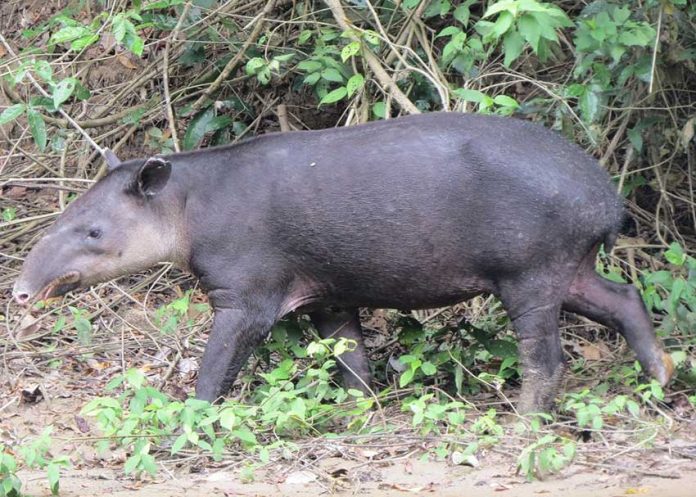Two specimens of endangered species, a pregnant Baird’s tapir and a black-and-white hawk-eagle, have been sighted in the Montes Azules biosphere reserve in the Lacandon jungle of Chiapas.
The Natural Protected Areas Commission, or Conanp, reported that the female tapir was seen near the Tzendales River in video footage that showed the animal had been injured in one eye, probably in an attack by a predator.
Conanp did not estimate how far along the pregnancy was but the mammal’s gestation period is about 400 days.
For the first week of their lives, infant Baird’s tapirs are hidden in secluded locations while their mothers forage for food and return periodically to nurse them. Later, the young follow their mothers on feeding expeditions. At three weeks of age, they are able to swim.
Weaning occurs after one year, and sexual maturity is usually reached six to 12 months later. Baird’s tapirs can live for over 30 years.
The species has been considered vulnerable since 1996, and is under threat from poachers and deforestation.
The hawk-eagle, meanwhile, is a bird of prey found throughout a large part of tropical America, from southern Mexico to northern Argentina.
It has been considered an endangered species by the Mexican government since 2010, but the International Union for Conservation of Nature has classified it as “a species of least concern.”
Conanp said the two sightings provide evidence that shows the Montes Azules reserve is in good health.
Conanp’s Conservation Program for Species at Risk (Procer) is responsible for biological monitoring and surveillance projects and programs. It also provides environmental education and awareness activities to inform communities of the importance of protecting endangered species.
In the Montes Azules reserve Conanp works with residents of the town of Reforma Agraria, in the municipality of Maqués de Comillas.
Source: El Universal (sp)
